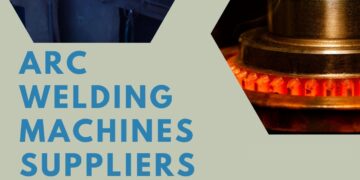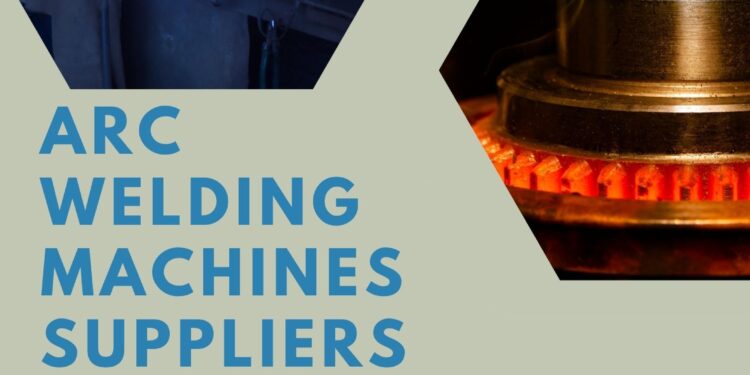Arc welding has become the cornerstone of metal fabrication in the US, playing a vital role in countless industries. From towering skyscrapers to intricate medical devices, arc welding joins metals with unparalleled strength and precision. This article delves into the world of arc welding machine manufacturers in the US, highlighting the key players and the diverse solutions they offer.
Understanding Arc Welding: A Foundation for Innovation
Arc welding utilizes an electric current to create an intense heat source, melting the edges of metal pieces. This molten metal then fuses together, creating a strong and permanent bond. There are various arc welding processes, each with its advantages and applications. Some of the most common include:
- Stick (SMAW) Welding: A versatile and portable process that uses a consumable electrode coated in flux.
- Metal Inert Gas (MIG) Welding: A popular choice for faster welding speeds and cleaner welds, utilizing a continuously fed solid wire electrode and an inert gas shield.
- Tungsten Inert Gas (TIG) Welding: Offers high-quality welds for thin metals and requires a skilled operator due to the use of a non-consumable tungsten electrode.
- Flux-Cored Arc Welding (FCAW): Combines features of both stick and MIG welding, offering a self-shielding flux core and faster welding speeds.
- Submerged Arc Welding (SAW): An automated process ideal for high-volume production, utilizing a submerged granular flux to protect the weld pool.
These are just a few examples, and different processes a best suited for specific applications and materials.
The American Welding Landscape: A Legacy of Innovation
The US has a rich history in arc welding technology, with companies constantly pushing the boundaries of innovation. Here are some of the top arc welding machine manufacturers in the US, each with a unique legacy and contribution to the industry:
- Lincoln Electric (Euclid, Ohio): Founded in 1895, Lincoln Electric is a global leader in arc welding equipment, consumables, and automation solutions. They offer a comprehensive range of welding machines for various processes, voltages, and applications.
- Miller Electric Mfg. Co. (Appleton, Wisconsin): A renowned manufacturer since 1928, Miller Electric offers a diverse line of arc welders for industrial, commercial, and hobbyist use. Their machines are known for reliability, performance, and user-friendly features.
- ESAB Welding & Cutting Consumables (Florence, South Carolina): Part of the ESAB Group, a global leader in welding and cutting technologies, ESAB offers a wide range of arc welding machines catering to industrial applications, including heavy fabrication and shipbuilding.
- Hobart Brothers Company (Troy, Ohio): Founded in 1919, Hobart Brothers is a Miller Electric Mfg. Co. subsidiary, specializing in arc welding equipment for industrial and vocational applications. Their machines are known for their durability and affordability.
- Hypertherm (Hanover, New Hampshire): While not solely focused on arc welding machines, Hypertherm is a leading manufacturer of plasma cutting systems. Plasma cutting utilizes an ionized gas stream to cut various conductive metals, and Hypertherm’s innovative systems are widely used in fabrication shops across the US.
These are just a few of the many arc welding machine manufacturers in the US. Each company contributes to the industry’s advancement by offering innovative technologies, user-friendly features, and reliable equipment for various applications.
Beyond the Big Names: Exploring Niche Manufacturers
The US arc welding machine manufacturing landscape extends beyond the major players. Here we explore some niche manufacturers catering to specific needs:
- Taylor Winfield Technologies (Youngstown, Ohio): With over 100 years of experience, Taylor Winfield specializes in resistance welding, but also offers a range of arc welding machines, including robotic and plasma arc solutions.
- Gullco International, Inc. (Macedonia, Ohio): While not solely focused on arc welders, Gullco offers a range of electronic beam (EB) welding machines. EB welding utilizes a high-energy electron beam to create deep penetration welds, making it ideal for aerospace and nuclear applications.
- Sciaky, Inc. (McHenry, Illinois): Specializes in resistance welding and friction welding, but also offers some specialty arc welding machines, including friction stir welding (FSW) machines. FSW utilizes friction and heat to create solid-state welds, particularly useful for joining dissimilar metals.
These niche manufacturers cater to specific welding needs and offer specialized equipment for industries like aerospace, nuclear power, and automotive manufacturing.
Choosing the Right Arc Welding Machine: A Guide for American Fabricators
Selecting the right arc welding machine for your needs requires careful consideration. Here are some key factors to consider:
- Welding Process: Identify the primary welding process you’ll be using (e.g., MIG, TIG, Stick). Different processes require specific machines with compatible features.
- Material Thickness: Choose a machine with sufficient amperage output to handle the thickness of the metal you’ll be welding. Thicker metals require higher amperage for proper penetration.
- Duty Cycle: The duty cycle refers to the percentage of time the machine can weld at its rated amperage without overheating. Consider the length and intensity of your welding jobs when choosing a duty cycle.
- Portability: If mobility is crucial, consider a portable machine with a lightweight design. Conversely, stationary applications can benefit from a more robust machine with a higher duty cycle.
- Advanced Features: Modern arc welders offer various features like pulse settings, digital displays, and memory functions. Evaluate which features would enhance your specific welding needs and workflow.
- Brand Reputation and Service: Choose a reputable manufacturer with a proven track record of quality and reliable customer service. Consider factors like warranty coverage and availability of replacement parts.
By carefully considering these factors, American fabricators can make informed decisions when selecting the ideal arc welding machine for their specific projects and applications.
The Future of Arc Welding: Embracing Innovation
The world of arc welding is constantly evolving, with manufacturers pushing the boundaries of technology and automation. Here’s a glimpse into some exciting trends shaping the future of arc welding in the US:
- Rise of Robotics: Robotics are playing an increasingly prominent role in arc welding, improving efficiency, consistency, and safety in high-volume production environments.
- Advanced Automation: Automated welding systems are becoming more user-friendly and accessible, offering benefits like reduced operator fatigue and improved weld quality.
- Focus on Sustainability: Manufacturers are developing eco-friendly welding solutions that minimize energy consumption and reduce environmental impact.
- Additive Manufacturing Integration: Arc welding is increasingly integrated with additive manufacturing processes like 3D printing, creating new possibilities for complex component fabrication.
- Smart Welding Technologies: Integration of sensors and artificial intelligence is paving the way for “smart” welding machines that can monitor weld parameters, diagnose problems, and adjust settings in real-time for optimal results.
These advancements highlight the dynamic nature of the arc welding industry in the US. Manufacturers are committed to developing innovative and efficient solutions that meet the evolving needs of American fabrication shops.
Conclusion: A Foundation for American Industry – Arc Welding and Beyond
Arc welding remains a cornerstone of American industry, playing a vital role in countless sectors. The dedication of US manufacturers to innovation ensures a future where arc welding continues to evolve, becoming more efficient, automated, and sustainable. As the technology progresses, American fabricators will continue to benefit from a wider range of solutions to meet their specific needs and contribute to the nation’s continued industrial prowess. From towering skyscrapers to intricate medical devices, arc welding empowers American manufacturers to create, build, and shape the future.












































